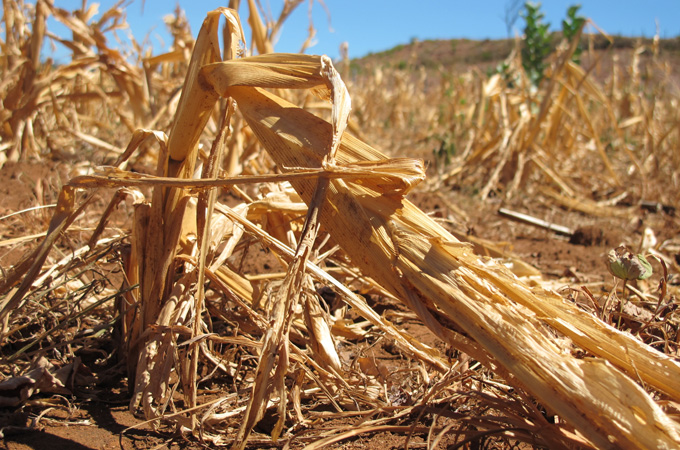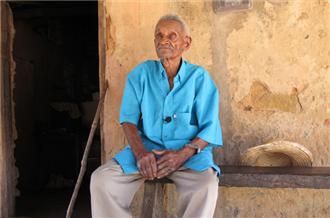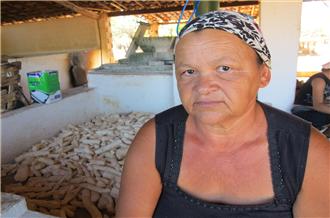
That is saying a lot, given that he is 95 years old.
In a couple of weeks, more than 100 heads of state and thousands of environmentalists from all over the world will be in Rio de Janeiro for the UN Rio+20 environmental summit, billed as the biggest and most important meeting of its kind. Most participants will meet in air-conditioned hotels and conference centres discussing how to save the planet. Part of the talks, for sure, will be about access to water.
Da Rocha hasn't received an invitation to Rio+20, doesn't even know what it is, and has no interest in finding out.
Instead, he will be where he spends most of his days: sitting on a wooden bench on his front porch, in the shade to stay cool, in his modest brick home in a dusty village of a few hundred people about a half-hour's drive from the town of Picos (population: 74,966) in Brazil's semi-arid northeast state of Piaui.
Da Rocha doesn't have the luxury of simply deliberating the theoretical scenarios of access to water. He is living it. And so are millions of other Brazilians right now: the northeast of this country is suffering through the worst drought in four decades. More than 900 municipalities have declared a state of emergency.

In the economically depressed state of Piaui, the drought is hitting particularly hard. The state has a GDP per capita of about $3,000/person, the lowest in Brazil. Twenty-two per cent of the population is illiterate and 93 per cent of the 3.1 million people in this state don't have access to a proper sewage system.
In Piaui, half of the 224 municipalities have declared a drought emergency. Animals are dying. Corn and bean crops wilted away weeks ago, with no hope of coming back this season. Manioc seedlings planted this harvest died before they could even grow.
Withered crops
Antonio Alves Pereira has also lost all his crops he grew to feed his family. He receives a government stipend of about $300 a month. But with the drought this year, he says, it won't be enough. All that money is going to pay for food he used to grow himself but now has to buy at the market in town.
"I had to sell my extra chickens just to buy the other stuff we need, like sugar and even rice," Pereira told Al Jazeera.
Further down a dusty road is Maria dos Santos, owner of a small manioc processing plant that employs 11 people. She buys form local growers, her neighbours, but she's only operating at 30 per cent capacity due to lack of product from the drought, and says the hardest part will be the next harvest.

She probably should have started layoffs a while ago, but all her workers are from working-class backgrounds just like herself.
"They rely on me for their money to feed their families," she said.
Millions in Brazil right now are affected by the drought. It is perhaps made all the worse by the fact that Brazil has one of the world's most advanced family agriculture assistance programmes for the poor.
Brazil's long-term solution to the lack of water in the northeast is an ambitious, $4bn construction project started in 2007 to built 720km of canals to redirect 3 per cent of the Sao Francisco River to divert water to 12 million people.
But the project has been hampered by delays, and is not yet complete. "The government should see this and think of a measure that really solves the problems of the drought in the northeast," Janio Marcos Rufino, a local civil defence official, told Al Jazeera. "First, the people here have nowhere to work."
In this most unforgiving dustbowl area of Brazil, resilience is the name of the game. They have to be, because the situation is going to get worse. The first rain of the season isn't expected until October or November.
And long after the Rio+20 environment summit is over - after the world leaders leave Brazil, the declarations signed and the photo ops complete - there will still be an elderly man here.
He will be sitting on that bench on his porch, shaded from the sun, watching the wind whip the dust and the sun bake the earth. There likely won't be a drop of rain, but he will be adapting, and wondering what tomorrow will bring.
But he won't need any youngster in a suit and tie to tell him.



That kind of events (Droughts) in the North of Brazil, are not new they are systemic since 30 to 40 years ago.
it seems that al-jazeera made this report just to make attention to the ill flawed Rio+20...